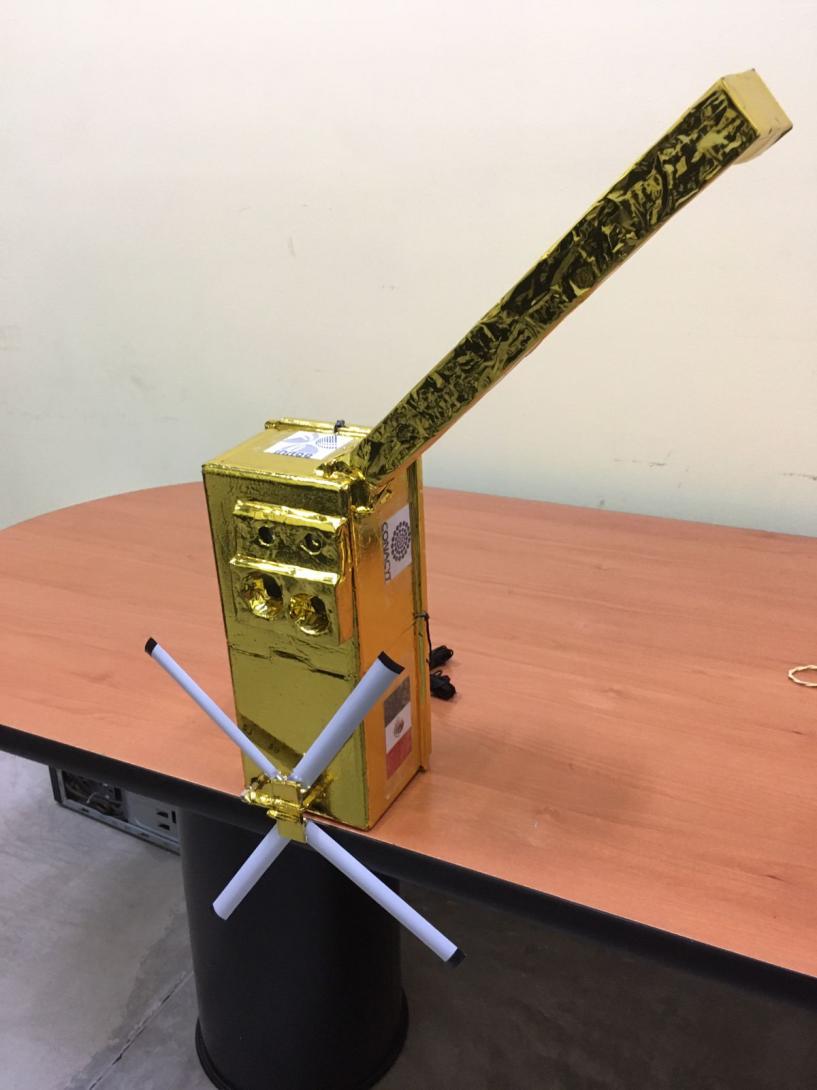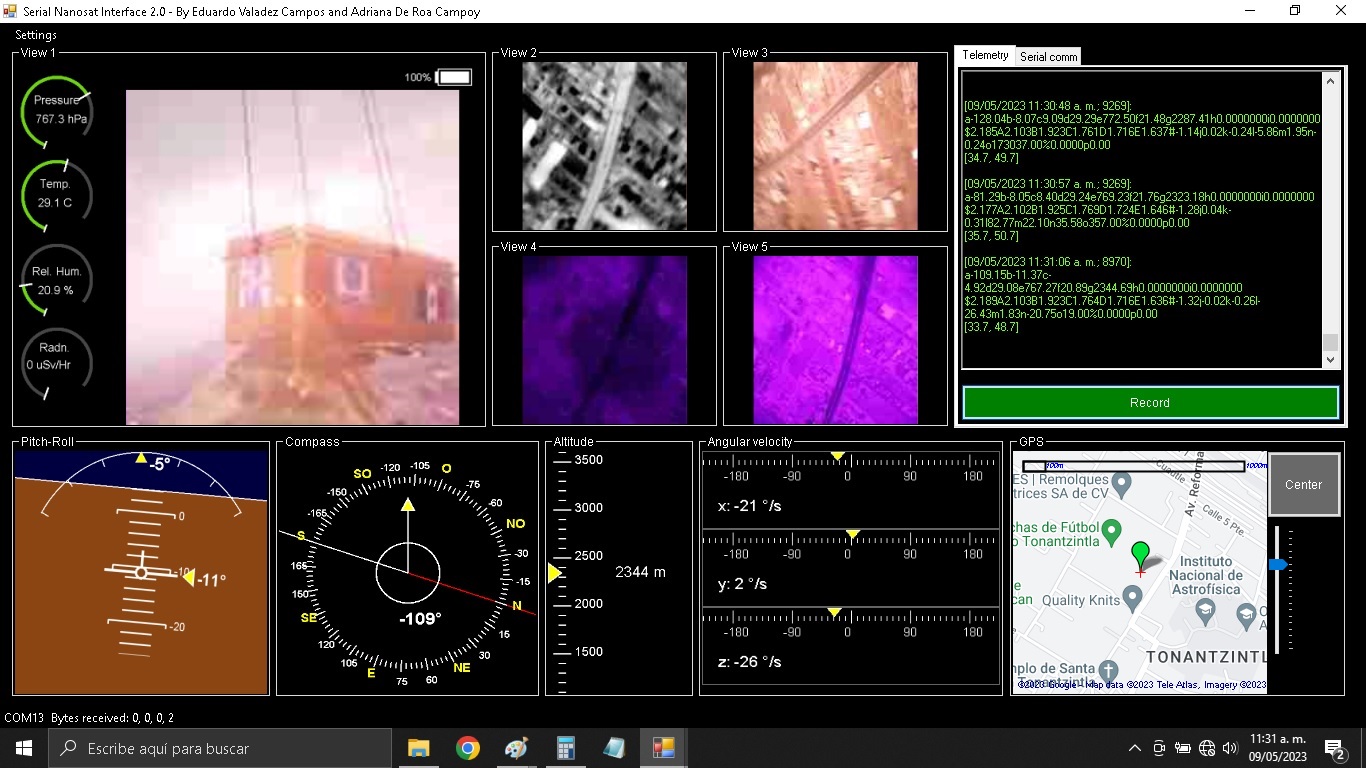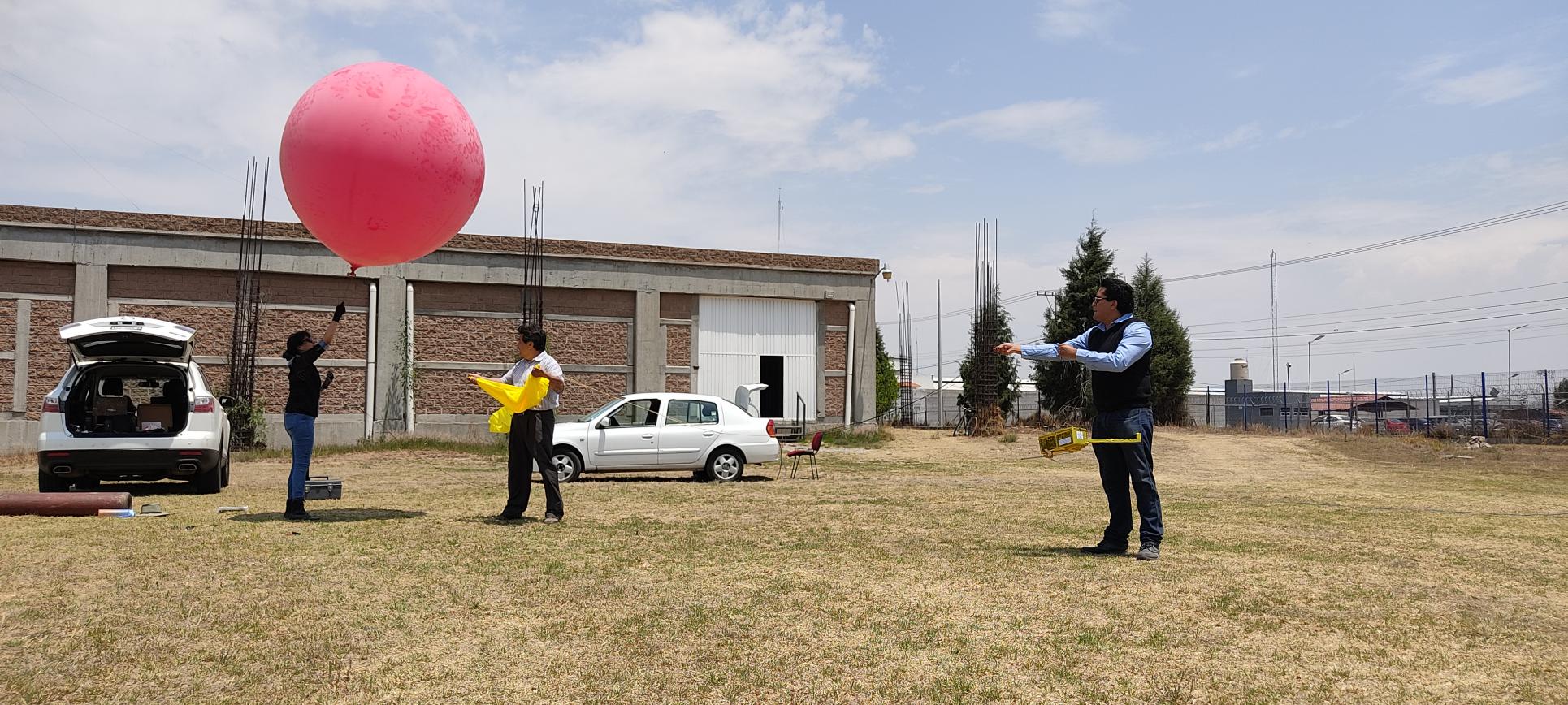Tests of Infrared Platform for Earth Observation
Santa María Tonantzintla, Puebla, May 18, 2023. The team from the National Institute of Astrophysics, Optics and Electronics (INAOE) that is developing the "Infrared Platform for Earth Observation" that will be installed on the Chinese Space Station ( CSS for its acronym in English), led by Dr. Eduardo Mendoza Torres, carried out some tests of the instrument. For this, a probe containing cameras like those used in the Infrared Platform was built and the probe was released in a weather balloon.

The Infrared Platform was designed by INAOE Space Science and Technology master's student Eduardo Valadez Campos and Mechatronics engineer Adriana de Roa Campoy. The probe included four wide-field cameras for Earth observation, one in the mid-infrared (MIR), one in the visible, and two in the near-infrared (NIR). acronym in English), all with the same characteristics as those of the Infrared Platform. In addition, the probe carried humidity, temperature, pressure sensors, among others, as well as a Geiger counter and a camera to observe the probe itself. The objective of the platform is to map the content of water vapor in the atmosphere and the temperature of the ground and it is one of the nine projects selected by the UN and the Chinese Space Agency for Human Spacecraft (CNSA) to be installed on the Chinese Space Station (CSS).

The observations of both the water vapor content and the soil temperature are aimed at studying the conditions of phenomena that have been observed in recent years, such as the occurrence of regions of the Earth's surface and the sea with temperatures several degrees. higher than their surroundings and the sudden onset of storms that turn out to be very intense. This behavior of the meteorological conditions seems to be due to climate change, since said behavior is becoming more and more extreme. Studies of the water vapor content are also useful in astronomy, since they allow the identification of suitable sites for astronomical observations.
This platform is part of a development line of different projects that over several years have resulted in instruments designed and tested by Dr. Eduardo Mendoza's team, including an infrared telescope for observations of the Sun, a mid-infrared camera in flights with drones to identify humidity points in cultivated lands and different models of stratospheric probes.
Dr. Eduardo Mendoza Torres, a researcher at the INAOE Astrophysics Coordination and team leader, comments that this project has been possible thanks to the joint work of various areas of the institute and that "the development of this technology can not only be applied to study of climate, soil and agriculture, but also has multiple applications, such as in industry, for example, in the observation of motors, and other components that heat up, as well as in electronic instruments and electrical installations and can also be apply to identify wet areas in buildings, which would allow us to locate water leaks that can cause structural damage".

When asked about the current scope of infrared imaging, he adds that "in the area of medicine there are methods in which infrared technology is used to detect circulatory problems related to different conditions, for example, diabetes and cancer." Specifically, regarding the prototype of the platform that was tested in the meteorological balloon, he comments "with the support of INAOE, Conahcyt and my entire work team, we have created an infrared platform with commercial components, which gives us the opportunity to not depend on technology from other countries and shorten the technological gap in the Mexican aerospace area".
For his part, Eduardo Valadez, in charge of the design of electronic systems and software, adds that "these tests with probes are very important because they allow us to gather information on the soil and climate in Mexican territory and advance in the validation of the operation of the components that will be used in the final design of our platform that will be deployed on the space station."
Regarding the work carried out jointly with Dr. Mendoza, he comments that "the development of all the instruments that we have tested over the years has been a great challenge, but the continuous work has led us to this point in which Mexico is advancing to international level in the area of Space Science and Technology, although we still have a long way to go”.
Adriana de Roa, in charge of the mechanical and structural design of the platform, points out that "the design of the mechanical structure of the platform is an extremely detailed job with specific requirements provided by the CNSA, which is equivalent to a lot of time spent to the design, simulations, optimizations and tests to meet them".
Regarding the challenges she has faced as a woman working in science, she comments that "mechanical design is an area dominated mainly by men, so working on this type of project, with all the difficulties and obstacles, represents for give me the opportunity to be an example for other girls, adolescents and women who want to dedicate themselves to science and technology in Mexico and remind them that their ideas and effort can lead them to build instruments like this one, which will be in a space station".
Finally, Dr. Mendoza mentions that the project has had the support of researchers, technicians and, in general, INAOE staff and laboratories, and he wishes to express his gratitude to all of them and to all the other people who have institutionally supported this project
Luis Enrique Erro # 1, Tonantzintla, Puebla, México, Código Postal 72840, Tel: (222) 266.31.00, difusion@inaoep.mx
This work is licensed under a Creative Commons Attribution-NonCommercial-NoDerivs 2.5 Mexico License.


